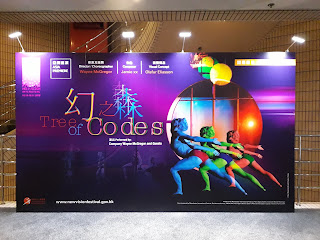30 Nov 2018 |
Ashley
What do we know about Iranian films? Does the name Abbas Kiarostami ring a bell? After his recent death in 2016, his last film 24 Frames (2017) was shown at my favourite cinema in Hong Kong, Broadway Cinematheque. In this experimental film, he paid homage to filming, which was all his passion, and composed 24 frames, symbolic to the number of frames we see in one second of a film, and filled them with picturesque sentiments. In the recent Hong Kong Asian Film Festival 2018 (HKAFF), I am happy to know that films by another Iranian film director, Jafar Panahi, also known as Kiarostami's former assistant director, were shown.
 |
| Film poster at BC |
Having worked alongside one of the greatest masters in Iranian films, Panahi has inherited a lot of features from Kiarostami's road trip style and the blurriness between fiction and realism. I went to see 3 Faces (2018) directed by Panahi at a local cinema. It is a relatively new film and I was delighted to see it on screen. Panahi's films are easily recognisable since their styles are distinct. Even though the disclaimer says that the story is imagined, the style of filming, especially its casual dialogues, non-tracking of the face of the person who speaks, as well as ordinary characters render the film easily a documentary. What's more interesting that would mess with your mind is the identity of the two main protagonists of the film, one being Behnaz Jafari, a popular Iranian actress, and no other than Panahi himself, both playing themselves. At this point, we really have to ask ourselves, wait... Why is the director assuming the role of a director on screen but still is the director of this film? Why is the actress of the film assuming the role of an actress and as herself? Are they acting? Or is this a documentary? Is it an auto-biography that Panahi intends to make? I say no. I think all of these are to mess with our heads, and I enjoy it. If the disclaimer says this is fake, it is fake. All we could do is believe it and be in awe of how Panahi plays and experiments with the fragile line between reality and fantasy, and how he manages to direct and act at the same time. It must have been quite a challenge.
 |
HKAFF banner at BC
|
This film does not lack humour either. When one of the residents in the remote village Panahi and Jafari drive to requests Jafari to bring to Panahi his son's foreskin and to eventually have it be given to someone the villager admires, there was no doubt I was sniggering. The seriousness that this village man adopts to speak his line, to speak of the importance of this foreskin for his son's fortune, I could not help but follow Jafari's lead and react in a suppressed bewildered way. It is truly fascinating. Perhaps like Panahi and Jafari, we are city people. We do not understand the beliefs of the villagers and even laugh at them for it. But the humour instilled in this scene makes us question our differences and why there are and who we think are superior and why we categorise ourselves so.
 |
Display on HKAFF at BC
|
The ending is a typical Panahi/ Kiarostami ending as well. As the camera stays at its gaze from afar, we see a long road leading to a faraway destination which we cannot perceive. Jafari, leaving Panahi in his car walks far ahead. We see her slowly becomes smaller and smaller, as we detach ourselves further from the character/person. But the village girl who wants to be an actress and threatens Jafari for it at the beginning runs from behind the camera to be on the road as she screams Jafari's name, seizing the audience's attention once again for the faraway figure. The little figure which appears to be Jafari stops and waits for her. They join each other at far and together, slowly dissolve into the end of the road. It is a stunning ending. We see a lot of films that end at a scene where characters walk away. But in this film, the little interaction between the characters in this last scene renders this simple ending an extremely meaningful and heartwarming one.





Comments
Post a Comment